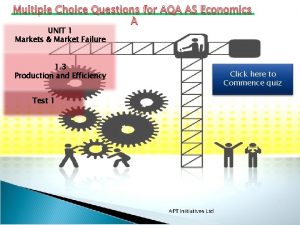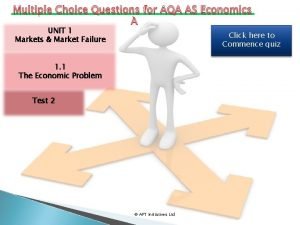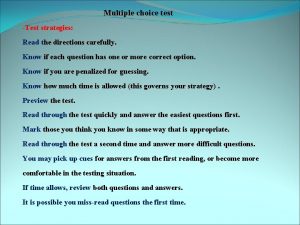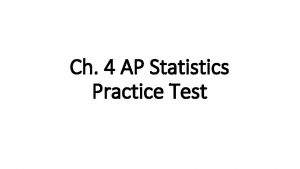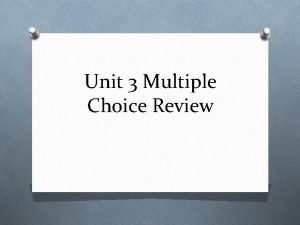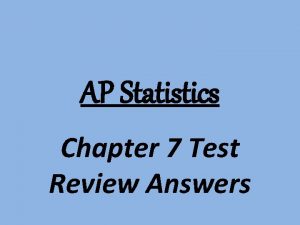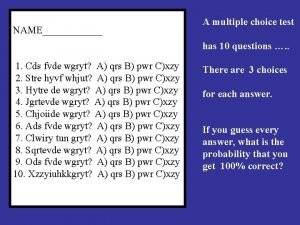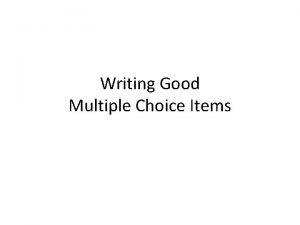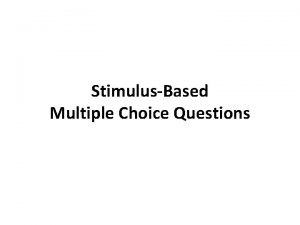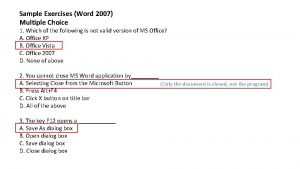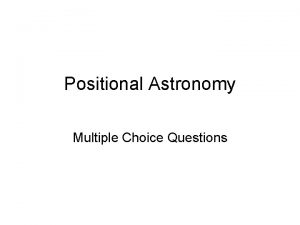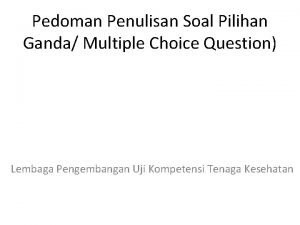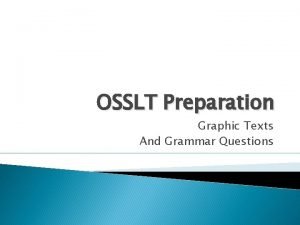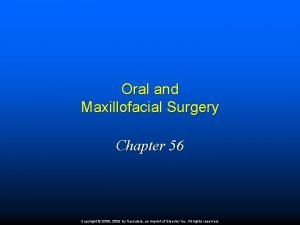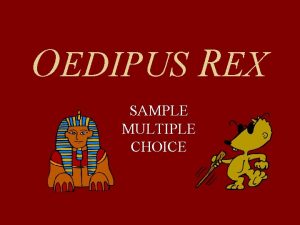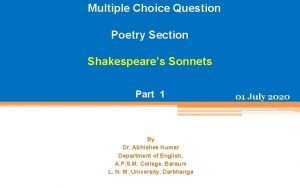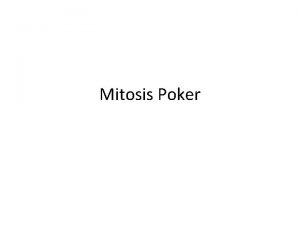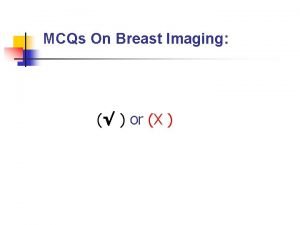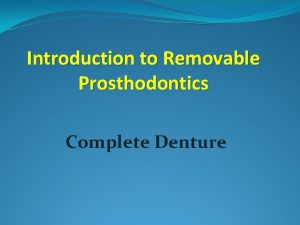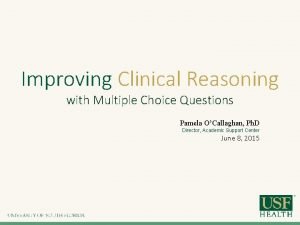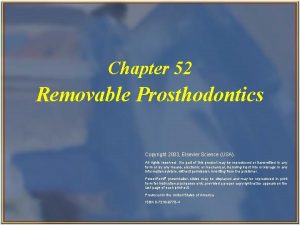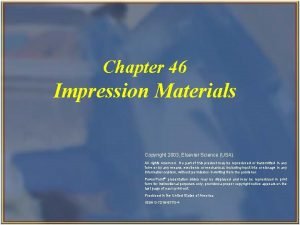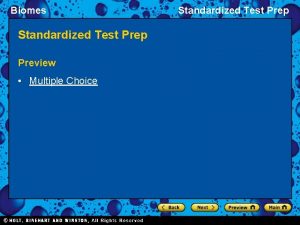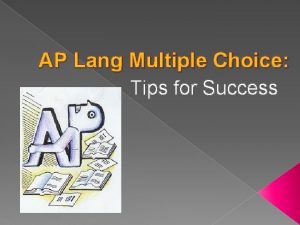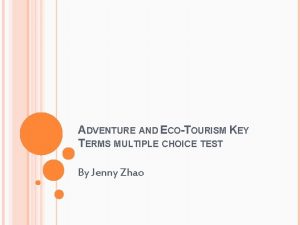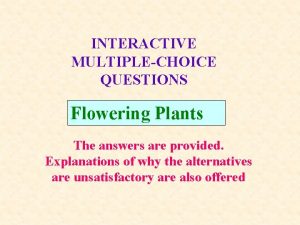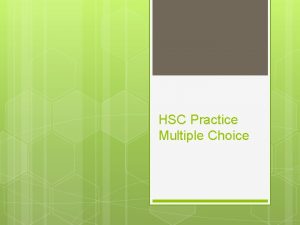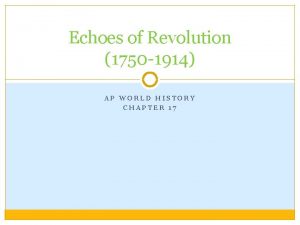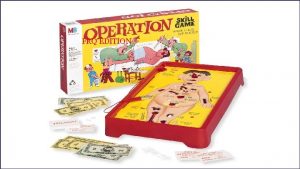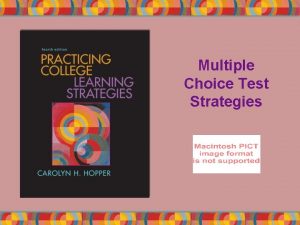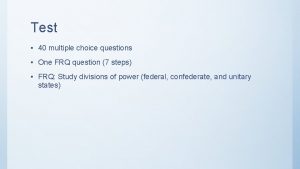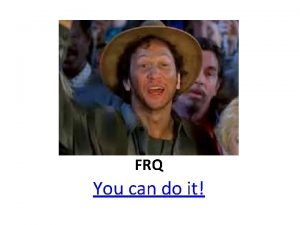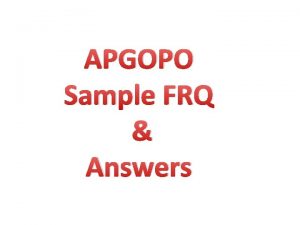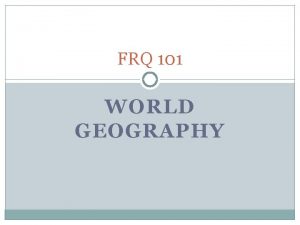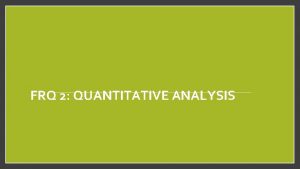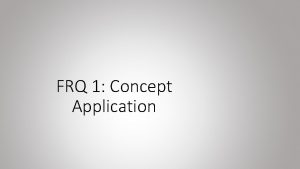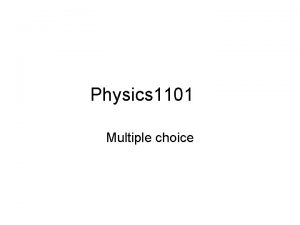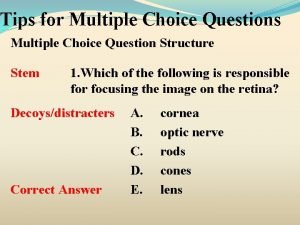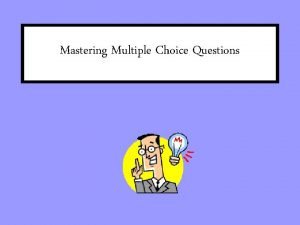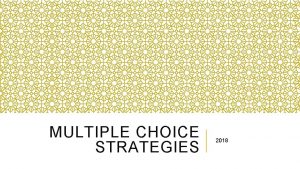Test 30 multiple choice FRQ sheet AP Economics














































- Slides: 46

Test • 30 multiple choice • FRQ sheet

AP Economics Unit 1 Mr. Parish

Economics • The study of decision-making and the use of limited resources in an attempt to fulfill unlimited wants

Scarcity • Exists whenever there is not enough of something to fulfill all wants. • Scarce – Desirable – Limited

Opportunity Cost • The best forgone alternative. • What one gives up when deciding to do one thing over another.

Opportunity Cost • VALUE of the next best alternative

Opportunity Cost • Felix is considering going to Florida for a spring vacation. His roundtrip airfare will be $275. 00, car rental $175. 00, and hotel expenses $950. 00 for a one-week trip. Since he will not be working he will not earn his typical $1250. 00 per week. Felix always eats at restaurants, even when he’s home, so he knows that he will spend about $290. 00 on food. • Calculate the total cost (explicit and implicit) of Felix’s trip. Show and label your work.

Opportunity Cost • Felix is considering going to Florida for a spring vacation. His roundtrip airfare will be $275. 00, car rental $175. 00, and hotel expenses $950. 00 for a one-week trip. Since he will not be working he will not earn his typical $1250. 00 per week. Felix always eats at restaurants, even when he’s home, so he knows that he will spend about $290. 00 on food. • Calculate the total cost (explicit and implicit) of Felix’s trip. Show and label your work.

Rational Choice Theory • People act in self-interest • Decisions are based on opportunity cost • Marginal Analysis • MB > MC

Economic Models • Simplified constructs used to simulate reality

Production Possibilities Frontier A B C

PPF (or PPC) • Production Possibilities Frontier (Curve) • Addresses – The Economic Problem- Scarcity – Opportunity cost and Trade-offs – Resources/Factors of Production – Specialization of Resources – Productive and Allocative Efficiency – Capital versus Consumer Goods – Ceteris Paribus- “all other things constant”

PPF (or PPC)

PPF (or PPC) Concave versus Linear


Shifting PPF • Change in resources or technology

Do we want a world with all links and no smiles? ? ? ? • Productive Efficiency – Lowest cost – Full employment – *P= minimum ATC *Not in this unit! • Allocative Efficiency – Socially optimal – Ideal production quantities – *MSB=MSC – *P=MC

Micro v. Macro • • Small picture Individuals Specific markets Specific firms Specific goods Specific services Specific resources • • • Big picture National stats Country comparisons Money and interest International trade

Positive versus Normative • • Objective Fact-based Measureable Can Prove or Disprove “Cutting taxes will increase disposable income” • • Subjective Value-based Not Measurable Cannot Prove or Disprove “Cutting taxes is the best way to improve our economy”

Micro versus Macro Positive versus Normative



Marginal Analysis • Compare additional benefit to the additional cost – production or consumption • Incremental analysis – Cost/benefit analysis of a single unit of production or consumption

Marginal Analysis • Pizza • Paper Clip Company

Marginal Analysis KEEP GOING UNTIL: MB = MC MR=MC MRP=MFC • Marginal Utility/Benefit (consumption) – Additional satisfaction consumer gains from consuming/ acquiring one additional unit • Marginal Return (production) – Additional output from one unit increase of variable input

Marginal Analysis • Marginal Benefit/Utility/Return decrease *Law of Diminishing Marginal Utility/Returns • Marginal Cost (production)tend to increase

3 Economic Questions *coordination tasks

Resources/Factors of Production/Inputs • Land = Natural Resources • Labor = labor force, human capital • Capital = man-made resources, tools, technology • Entrepreneurship

Production • INPUTS- land, labor, capital, entrepreneurship • OUTPUTS- Goods and Services

3 Economic Questions *coordination tasks • _______________ to produce • ________ to produce

What?

What?

What? • Factors of Production • Land, Labor, Capital, Entrepreneurship

3 Economic Questions *coordination tasks • _______________ to produce • ________ to produce

How to produce? Factors of Production Land, Labor, Capital, Entrepreneurship

For whom to produce?

3 Economic Questions *coordination tasks • What to produce • How to produce • For whom to produce Who/what answers these questions? Who/what should answer these questions?

Market v. Command Economies • The market generally allocates resources efficiently.

3 Economic Questions COMMAND MARKET

Market or Command • • North Korea United States? free enterprise capitalism consumer sovereignty competition more efficient better quality • • • profit motive government control government ownership no motivation no private property rights • prices determined by s and d • lack economic freedom

US- Market or Command?

US Mixed Economy • Command Elements • Market Failure

3 Economic Questions *coordination tasks • _______________ to produce • ________ to produce

MARKET v. COMMAND MIXED COMMAND MARKET

• Absolute Advantage – ability to produce with fewer resources – Simple definition: better • Comparative Advantage – ability to produce at a lower opportunity cost

Circular Flow Model
 Aqa economics multiple choice questions
Aqa economics multiple choice questions Economics multiple choice questions aqa
Economics multiple choice questions aqa The story of an hour multiple choice questions
The story of an hour multiple choice questions Multiple choice questions directions
Multiple choice questions directions Chapter 4 ap statistics practice test
Chapter 4 ap statistics practice test Polynomials multiple choice test doc
Polynomials multiple choice test doc Hamlet multiple choice test
Hamlet multiple choice test Ap lit practice test multiple-choice
Ap lit practice test multiple-choice Conjunction quiz
Conjunction quiz Ap statistics chapter 7 test
Ap statistics chapter 7 test Math multiple choice test taking strategies
Math multiple choice test taking strategies Antigone multiple choice test
Antigone multiple choice test Multiple choice questions
Multiple choice questions Good choice or bad choice
Good choice or bad choice How to write multiple choice questions
How to write multiple choice questions Binary choice items
Binary choice items A second daniel merchant of venice
A second daniel merchant of venice What is stimulus in mcq
What is stimulus in mcq Which conjunctive adverb best completes the sentence
Which conjunctive adverb best completes the sentence How to create multiple choice questions in word 2007
How to create multiple choice questions in word 2007 Recursion ap computer science
Recursion ap computer science Stimulus-based questions examples
Stimulus-based questions examples Astronomy questions and answers multiple choice
Astronomy questions and answers multiple choice Persuasive writing mcqs with answers pdf
Persuasive writing mcqs with answers pdf Vignette multiple choice
Vignette multiple choice Osslt grammar practice
Osslt grammar practice Chapter 56 oral and maxillofacial surgery
Chapter 56 oral and maxillofacial surgery The plot of oedipus deals mainly with
The plot of oedipus deals mainly with Poetry multiple choice sonnet
Poetry multiple choice sonnet Stem cell multiple choice questions
Stem cell multiple choice questions Mcqs on breast anatomy
Mcqs on breast anatomy Parts of complete denture
Parts of complete denture Vignette style mcq
Vignette style mcq Growth mindset multiple choice questions
Growth mindset multiple choice questions Elsevier
Elsevier Chapter 46 impression materials multiple choice
Chapter 46 impression materials multiple choice Chapter 37 vital signs and measurements true or false
Chapter 37 vital signs and measurements true or false Biomes multiple choice questions with answers
Biomes multiple choice questions with answers Ap lang test structure
Ap lang test structure Alteryx certification cost
Alteryx certification cost Multiple choice questions on ecotourism
Multiple choice questions on ecotourism Which command is used to set terminal io characteristic?
Which command is used to set terminal io characteristic? Tone multiple choice questions
Tone multiple choice questions Multiple choice questions on photoelectric effect
Multiple choice questions on photoelectric effect Multiple choice questions on flowering plants
Multiple choice questions on flowering plants Hsc multiple choice
Hsc multiple choice Abolitionist movement ap world history
Abolitionist movement ap world history
